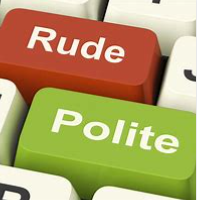Communication is crucial in any culture. But sometimes, communicating between cultures can be difficult because what something means in one language can have an entirely different meaning in another. In Japan, these five simple things can make a big difference and help you avoid miscommunication:
Use Respectful Language
The Japanese language is famously complex. It has a wide selection of words meaning the same thing, but with varying degrees of politeness. Choosing the perfect word takes practice even for native speakers, so this could be a real problem for travelers who usually only speak a little Japanese. However, there’s a simple solution. Always choose the most polite language with people you don’t know, as well as: anyone older than you, professionals (like doctors and lawyers), and, people in your workplace (especially managers and executives), and you’ll avoid offending anyone.

“It’s Difficult”
Japanese people tend to avoid confrontation, so instead of saying “no”, they may instead say, “it’s difficult”. In Japanese, this phrase is “muzukashi desu”. While not necessarily a no, it usually is, and hearing it is the speaker’s polite way of letting you know the request or suggestion is probably not going to happen.

Crossed Arms
While the phrase “it’s difficult” is a non-confrontational way to say no, there is a very direct way and it involves no words at all. If you see someone make a gesture with their arms crossed in the form of an “x”, this means no or something’s not allowed, and you should probably stop what you’re doing. The “x” gesture is often used when there’s not a lot of time for words or when consequences could be dangerous. It’s also sometimes used by young ladies to deter romantic advances.

Yes Can Mean No
One of the most confusing communication issues foreigners can run into is with the use of the word “hai”, which means yes. While saying yes in Japanese is pretty straightforward, the word hai can also be used to acknowledge something or confirm that something is correct. For instance, in a conversation, you may hear a Japanese person frequently say hai. This doesn’t necessarily mean they’re agreeing with what is being said, it may simply mean they’re acknowledging they hear you or are following what you’re saying. That’s not too hard, right? But, there are times when the use of hai can get a little complicated, because sometimes, instead of meaning yes, hai actually means no.
In Japanese, if you’re asked a negative question, saying hai will be an affirmation of the negative. For instance, if someone asks you, “you didn’t close the door did you?”, saying “hai” to this will mean no I didn’t. In other words, saying “hai” to a negative question is acknowledgement that what they said is correct. It’s basically like saying “That’s right”.

Giving Verbal Feedback
Like many conversations in English, Japanese conversation typically involves active listening. Similar to how English speakers say “mm hmm” at various points in the conversation, the listener in a Japanese conversation often provides audible feedback known as “aizuchi”. Typically, that feedback is a variety of sounds sprinkled in the conversation at appropriate times (which usually corresponds to an important statement or when the speaker pauses). Aizuchi isn’t usually something the traveler needs to worry about doing, but it’s something that will probably be overheard. So if you overhear a conversation with one side speaking and the other saying “ehhhhhh” or “mm mm mm”, then you’ve heard the Japanese art of aizuchi.

To learn more about Japanese communication, you can learn a few simple words and how to pronounce them. Just check out WOW & POW: Word & Phrase of the Week – Japanalytic ™ to get started!


